When I built the Mk2 version last December, I took pictures to document the process. This model is now obsolete, but I think the pictures are still interesting, not only because they show how I built it, but also because they make clear some of the reasons why I decided to change the design. Enjoy!
 Battery holder (apologies in advance for the hazy look of the first few pictures)
Battery holder (apologies in advance for the hazy look of the first few pictures)
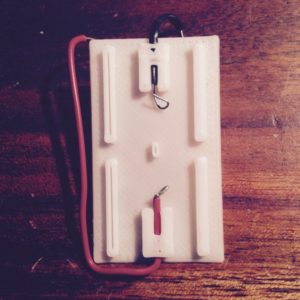 Battery holder lid, bottom view
Battery holder lid, bottom view
 Breadboard section (fits on top of the battery compartment)
Breadboard section (fits on top of the battery compartment)
 That’s the Pololu Regulator in the lower right corner
That’s the Pololu Regulator in the lower right corner
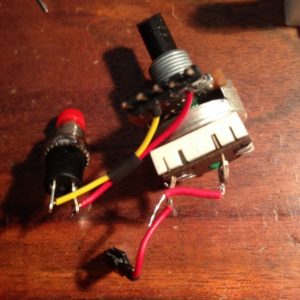 Potentiometer + On-off switch, and momentary switch
Potentiometer + On-off switch, and momentary switch
 Same, from above. I grouped all the connections so they could be all plugged and unplugged in one point, not individually on the board
Same, from above. I grouped all the connections so they could be all plugged and unplugged in one point, not individually on the board
 These cables would connect the group above to the board
These cables would connect the group above to the board
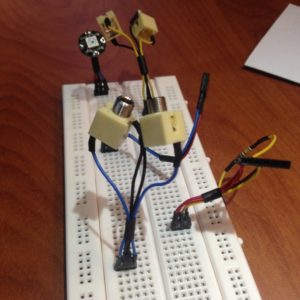 All the cables connecting the board to the top. After soldering each group, I add a drop of epoxy at the joint with the pins’ plastic bit; this makes it very resilient to general abuse
All the cables connecting the board to the top. After soldering each group, I add a drop of epoxy at the joint with the pins’ plastic bit; this makes it very resilient to general abuse
 All the various groups plugged to the board
All the various groups plugged to the board
 Bottom view of the lid with all the parts installed
Bottom view of the lid with all the parts installed
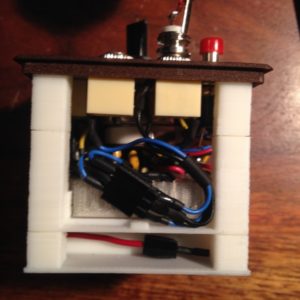 All the relevant connections are grouped and within easy reach, so assembly and disassembly is easy
All the relevant connections are grouped and within easy reach, so assembly and disassembly is easy
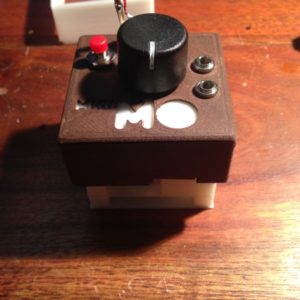 Top and first half of the cover
Top and first half of the cover
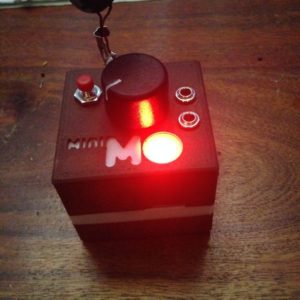 Fully assembled and operational!
Fully assembled and operational!
I think it is quite obvious that building the unit is labor intensive. Printing the parts is easy: I used a fine nozzle to print the breadboard (0.25), and the wood-like filament needs a bit of TLC, but there are no supports and it prints mostly on autopilot. The intensive part is preparing the many wires; not that it is difficult, but it takes time. In all, I think with practice I could bring building time to about a day, which is not unreasonable but not ideal either, if I expect to build a system with many modules and would want others to build it, too.
PS. Now that you know how Mk2 was made, you might want to take a look at the Mk3 WIP
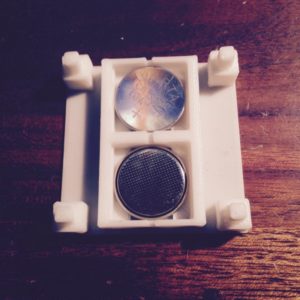

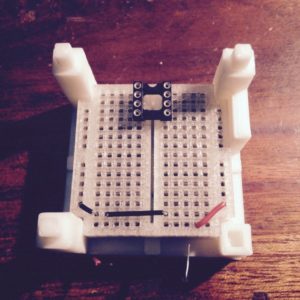
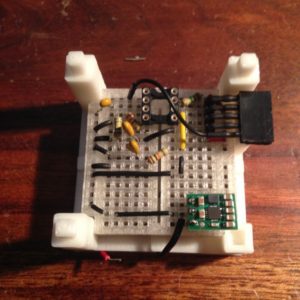
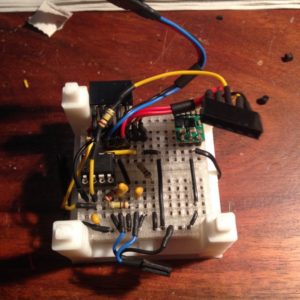
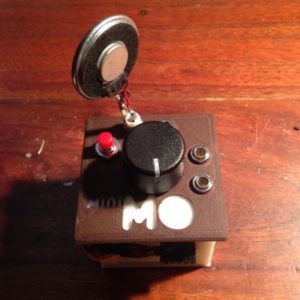
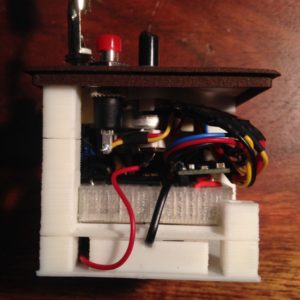
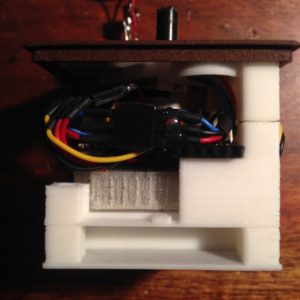
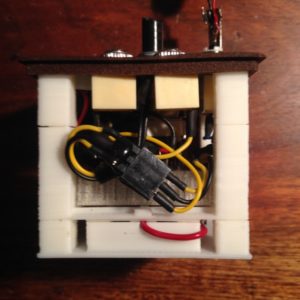
Pingback: Breadboard Mk3 WIP – miniMo